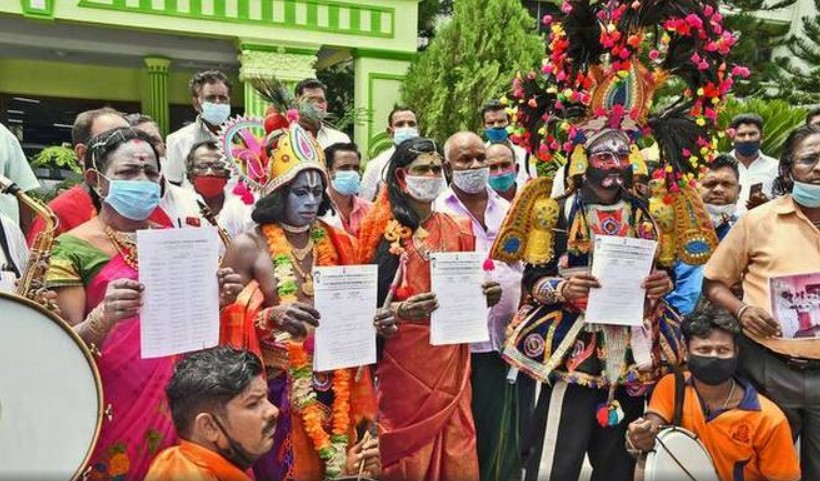
It is a plain reality that art can keep humanity sane through uncertainty, fear, forgetfulness and oblivion. The world turned to art after covid for sanity, entertainment, and escape. And this has proved to us once again the relevance of art and the respect it commands. Art as we know it has had to fight to remain relevant and respected in a society that increasingly prefers white-collar jobs and practices aversion towards the performing arts as a career. It is against this backdrop that a pathogen poses a threat, only to challenge amongst many, the performance art industry, which merely survived even before the pandemic. Support of Government institutions, philanthropists and society are vital in the advancement of performing arts and so the support it received through the pandemic becomes a telling-tale of the degree of attention these institutions pay during difficult times.
When the physical world shut its doors to the pandemic, performers lost their avenues, audiences, pre-booked programs and had to distance themselves from their fellow stage artists, and crew. When Netflix and Amazon got to work, some first world art-forms took to sustaining the memory of art in the virtual arena. Robust digital facilities, enhanced government support and the general positive response of audiences ensured the competence of performing arts in the online entertainment mode. Sadly, Indian professional artists who depended on stage shows, and physical venues had to retreat. The plight of artists, who performed for daily wages—whose performances depended on social gatherings— is huge. With no provisions for paid leave, or pensions, or allowances, they have been suffering considerably since the outbreak of the pandemic. Work from home is also not a feasible option, since the internet is not an accessible alternative for local, and small stage artists.

Folk artists assembling in front of the collectorate at Krishnagiri petitioning for financial assistance are some reported demonstrations that have caught the media’s eye recently. As far as the artists were concerned the festival seasons ensured year-long financial stability to them and their families. With the pandemic shutting down seasonal celebrations at local institutions, the artists are left with no financial support. In such situations, it is the responsibility of the government to provide funds and financial assistance to artists. Artists are submitting petitions which highlight the need for pension for artists. Artists from Delhi were heard calling out to the Ministries of culture, tourism, social justice and empowerment, for treating them like beggars and leaving them to take up odd jobs after the pandemic hit their artistic livelihoods. The concept of a ‘Magic Village’ in Delhi, was introduced by the local artists to sustain 500 families which depend on performing arts. The plight of the local artists is not a new story, it started even before the pandemic when government institutions themselves sort to restricting performances. With the government sparing no efforts at exploring the economic dimension and the potential of culture and art forms in contributing to the economy, this neglect towards performing artists seems to have a long history. From the marginal share the Ministry of Culture receives every year from the Union Budget, FY22 saw the least investment in the sector by the central government, with the mid-year revision last year witnessing a 21% budget slash, further aggravating the resource crunch in the industry. Local artists need resources in order to shift their livelihoods online: the right platform, the right audience, and support from external agencies, because not all art forms can adapt to the online mode and artists are yet to compromise on the low-key production value and gadget based medium of performance that this alter universe demands of them. Many organizations these days are encouraging artists to explore their options online, to innovate and find their ‘Creative Dignity’ in these spaces. This surely proves the strength of the brotherhood that art creates. Center for new perspectives (CNP), Sumansa Foundations and T.M.Krishna and friends(Covid-19 Artists Fund) are some organisations that are reaching out to the community of artists.
But we should not turn our attention and critique away from the kind of action we require of the government institutions in these times, the action that has been missing for the past two years. As the demands suggest, monthly allowances, and financial assistance, till the pandemic resides, pension for artists, and jobs modelled around NREGA, could be some immediate solutions to the plight of the artists. If our government were as dedicated as the governments of the UK, US, and China, our cultural wealth would not have suffered the way it did, even after the world took to facing the pandemic in 2021.


Thanks for your blog, nice to read. Do not stop.